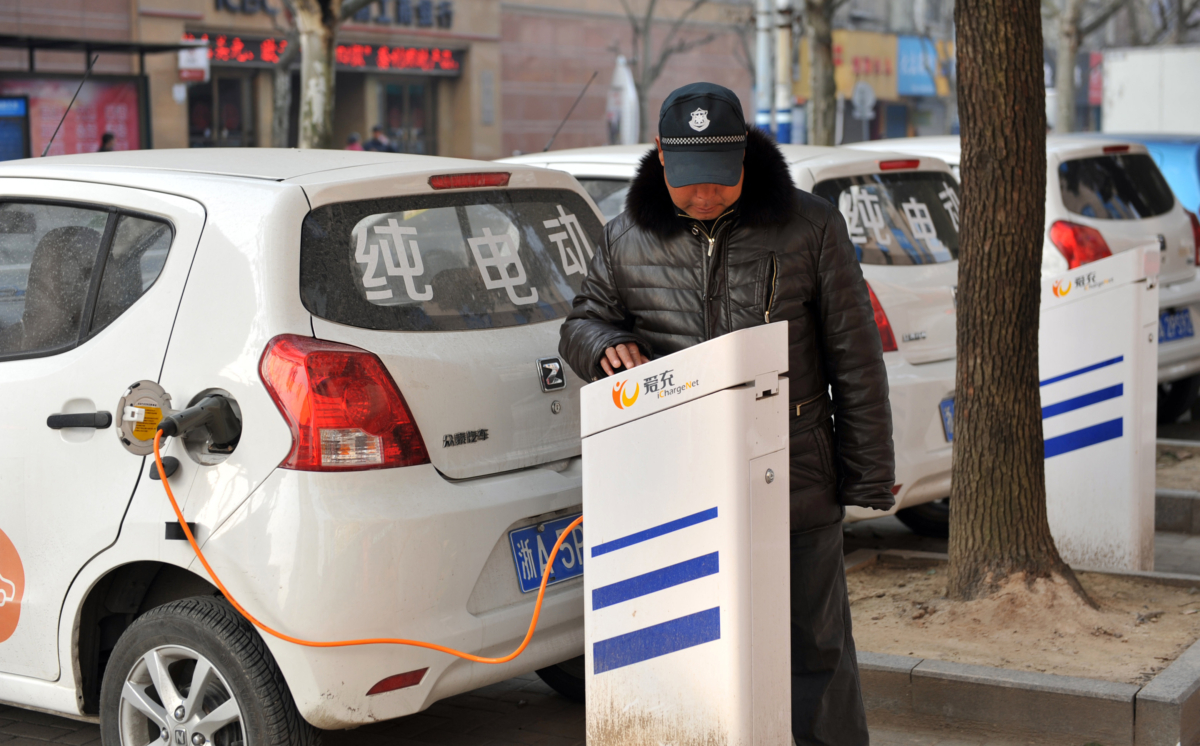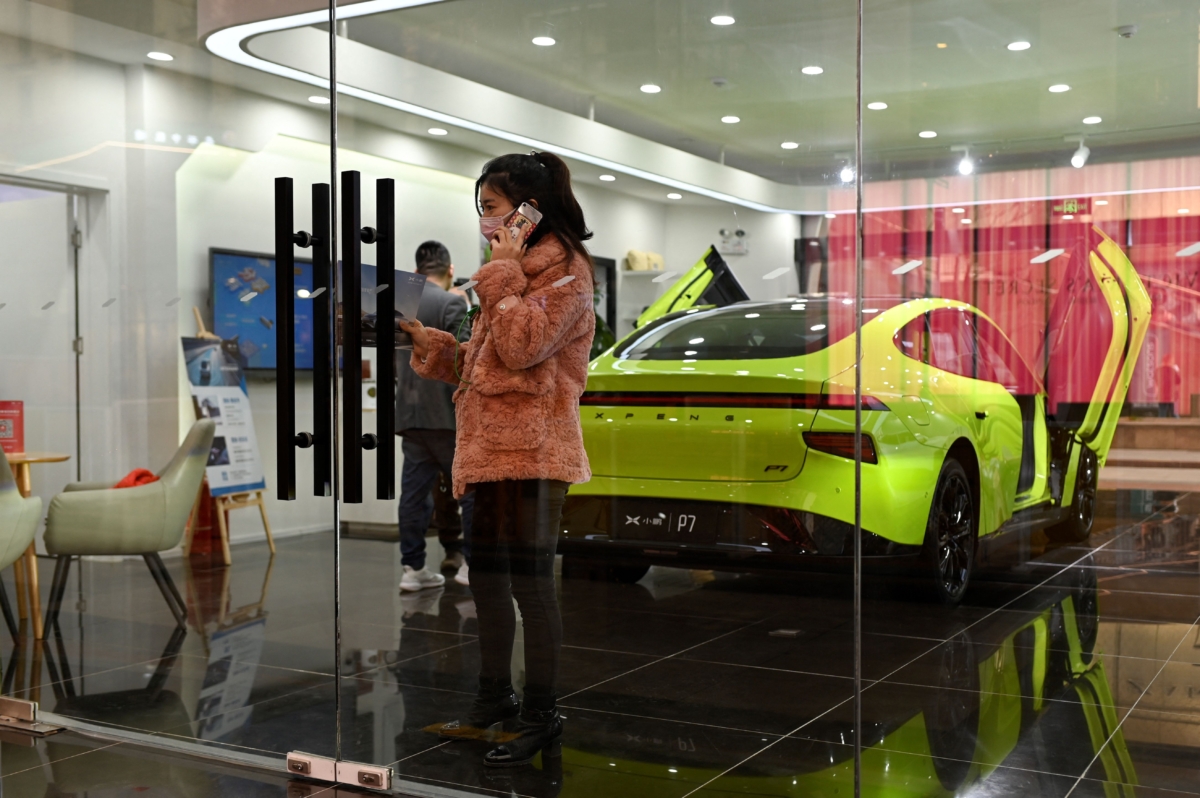The Troubled Reality of China’s EV Industry
A quick scan of global news this week revealed almost universally glowing reports about China’s electric vehicle (EV) industry. A Wall Street Journal article calling it a “triumph of Beijing’s industrial policy” was just one of several articles touting China’s lead in the electrification of the auto industry.
Despite the rosy headlines, however, experts say that China’s “new energy vehicle” industry, which has been funded with hundreds of billions of yuan in state subsidies, in reality, is on shaky ground.
The “new energy vehicle” category includes battery electric vehicles, plug-in hybrid electric vehicles, extended-range electric vehicles, and fuel-cell electric vehicles.
After years of COVID-induced supply disruptions and chip shortages resulting from U.S. sanctions, many Chinese electric auto companies have withdrawn from the market. Others are in the red or on the verge of bankruptcy. Buoyed by massive state subsidies, production numbers appear robust, but profits lag behind.
Meanwhile, amid an intensive price war, the China Association of Auto Manufacturers (CAAM) brokered a July 6 pricing “truce” among 16 EV automakers, including Tesla. Just two days later, on July 8, it retracted the agreement.
It’s another sign of a volatile market that, it is predicted, will force all but a handful of China’s EV manufacturers out of business by 2030.
A Shrinking Field of Automakers
A 2022 retail sales ranking released by the China Automobile Association in January showed that 149 EV brands were sold last year. Of those 149 brands, as many as 49 reported sales of less than 500 vehicles in 2022. Some of those brands have suspended production and are on the verge of bankruptcy.
That data indicates that out of the 635 vehicle makers reported by China’s EV regulatory body in March 2019, more than 76 percent have exited or are in the process of leaving the market.
U.S.-based entrepreneur Meng Jun, speaking on the June 25 edition of NTD TV’s “Elite Forum,” said that although the Chinese Communist Party (CCP) pinned its hopes on new energy vehicles as a force to grow the Chinese economy, the reality has run counter to its expectations.
2009–2019: Subsidy-Fueled Prosperity
In 2008, Elon Musk debuted his company’s first new EV, the Tesla Roadster, sparking a global electric car craze. Shortly after, Beijing decided to foster the emerging industry. The State Council issued its “auto industry restructuring and revitalization plan” on Jan. 14, 2009, proposing new energy vehicle development goals and the central financial arrangements to subsidize those goals.
With the implementation of preferential policies for electric vehicles, both manufacturers and purchasers of EVS were eligible for subsidies and sales tax exemption. Cities scrambled to embrace electric cars, incentivizing EV purchases with exceptions to restrictions on car purchases and traffic flow.

From 2009 through 2019, China’s treasury handed out billions in subsidies to buyers.
In late 2019, however, a sudden epidemic disrupted the CCP’s dream of dominating the global EV market, as draconian zero-COVID measures and lockdowns virtually cut off production and supply chains in many parts of the country.
Phantom Sales, Battery Swaps, Fake Licenses
China’s generous state subsidies surrounding EVs have given rise to a number of different fraud tactics. The subsidy amounts for a new energy vehicle—for instance, if subsidies from central and local governments are combined—are sometimes higher than the cost of the vehicle itself.
The subsidy fraud scandal was exposed during a national investigation by China’s Ministry of Finance in 2016. That investigation found that out of 93 vehicle companies, as many as 72 were found to have cheated on subsidies.
The investigation uncovered several types of subsidy fraud.
Fake licenses: China’s EV manufacturers receive subsidies based on their sales, and local governments typically check the number of vehicle licenses issued to verify the sales reported by the manufacturer. To get the subsidy without actually selling the car, some manufacturers obtain fake licenses without producing the vehicles in question, or by producing them with key parts missing. Therefore some subsidized vehicles exist only on paper. In one example, a bus company falsely reported almost 2,000 new energy vehicles in one year.
Battery swaps: EVs with bigger batteries—and therefore, a longer driving distance—get bigger subsidies. Some manufacturers equip test vehicles with larger batteries in order to get the bigger subsidy, then swap it out for a smaller battery in production.
Lucrative battery buy-backs: In new energy vehicles, the highest component cost is the battery, accounting for 30 to 40 percent of the price of the vehicle. In some cases, car companies will sell a new energy vehicle, obtain the government subsidy, and then repurchase the car from the “client.” The battery is then re-used in another vehicle, while the original vehicle may be converted to a traditional fuel auto, and resold. Of course, the “client” is the car manufacturer itself.
Phantom sales: In a similar strategy, instead of selling new energy vehicles to ordinary end-users, auto companies sell them to affiliated enterprises or downstream leasing companies in which they have a stake. The auto manufacturer then pockets the subsidy, and the related company dismantles the cars so the manufacturer can reuse the batteries, initiating another round of subsidies.

In the NTD panel discussion, Mr. Meng noted that these schemes give rise to a peculiar phenomenon in China. New EVs are parked everywhere. They line the streets, are parked in neat rows in parking lots and under viaducts. These cars, which are not being driven, “are used to cheat for subsidies,” he said.
To disincentivize fraud, the CCP gradually reduced subsidies from 2020 to 2022.
The tax breaks were set to expire at the end of 2022. However, Beijing announced on June 21 that it would extend the subsidies until the end of 2027.
A Red-Hot Price War
Late last year, China’s EV market entered a fierce price war, made more intense by the looming termination of subsidies by Chinese authorities.
In October, Tesla China slashed prices on its popular Chinese models. The discounts escalated further in January, with cuts that made locally produced cars up to 14 percent less expensive than in 2022.
Chinese automakers had little choice but to follow suit, and Western car companies like Ford and Volkswagen jumped into the fray. Even with a corresponding price war in the West, some cars in China were about 50 percent cheaper than they were in the United States and Europe.
Tesla China made several price cuts this year, announcing on July 1 that users could enjoy discounts ranging from 35,000 yuan to 45,000 yuan (about $4,830-$6,220) on the new Model S or Model X models. In addition, a friend’s referral could get the buyer of a new Tesla Model Y or Model 3 vehicle a cash credit of 3,500 yuan ($483), the company announced July 7.
On July 6, CAAM brokered a remarkable pricing “truce” that included 16 EV automakers, including Tesla, who pledged to avoid “abnormal pricing.” Two days later, on July 8, it retracted the agreement, citing antitrust laws.
A Struggle for Survival
In this environment, many new energy car companies that have yet to be eliminated are struggling to survive.
The three most robust electric car makers in China—NIO Inc., XPeng Motors, and Li Auto—are struggling to turn a profit.

According to annual reports from the three companies, their losses surged in 2022 compared to the prior year, despite increasing sales.
NIO reported a net loss of 14.437 billion yuan (about $1.99 billion) last year, an increase of over 250 percent year-over-year, and a loss of about $16,000 per vehicle.
In 2022, XPeng Motors lost 9.14 billion yuan ($1.26 billion), up almost 90 percent year-over-year. The car company lost the equivalent of $10,000 per vehicle sold.
Li Auto, the company behind the EV brand Ideal, lost 2.03 billion yuan ($280 million) in 2022 sales, up over 500 percent year-over-year.
Li Auto reported record sales in June. Meanwhile, deliveries picked up for NIO and XPeng forecast a surge in orders due to its cutting-edge G6 model, launched in late June.
However, Xpeng’s G6 model—its answer to Tesla’s Model Y—is widely reported to be the company’s “last stand.” And analysts don’t expect NIO to turn a profit until 2025.
Li Auto was the exception, reversing last year’s losses and reporting a profit in May.
A Knock-Out Race
Perhaps ironically, considering his company’s struggles, XPeng’s chairman, He Xiaopeng, said in April that the EV industry’s knock-out race has just begun, and that there will be left no more than ten mainstream automakers in China in the next ten years.
Echoing Mr. Xiaopeng’s concern, consultancy AlixPartners, cited in a July 10 Reuters Explainer, predicted that only 25 to 30 of the 167 companies currently registered to produce EVs or electric hybrids in China will be around by 2030.
The revenue losses are even more alarming when one considers that more than 100 billion yuan ($14 billion) has been invested in new energy vehicles in China over the past 13 years, according to figures from China’s Ministry of Information.
That number is “not including the investments absorbed by hundreds of so-called new energy vehicle companies,” Mr. Meng said. It is clear, he said, that China’s EV manufacturers are not actually making money but are “relying on the state subsidies.”
Heavy reliance on state subsidies masks the Chinese EV industry’s lack of global competitiveness, Mr. Meng added. He expects a technology bottleneck and chip shortage caused by U.S. sanctions to further hamper long-term development.




